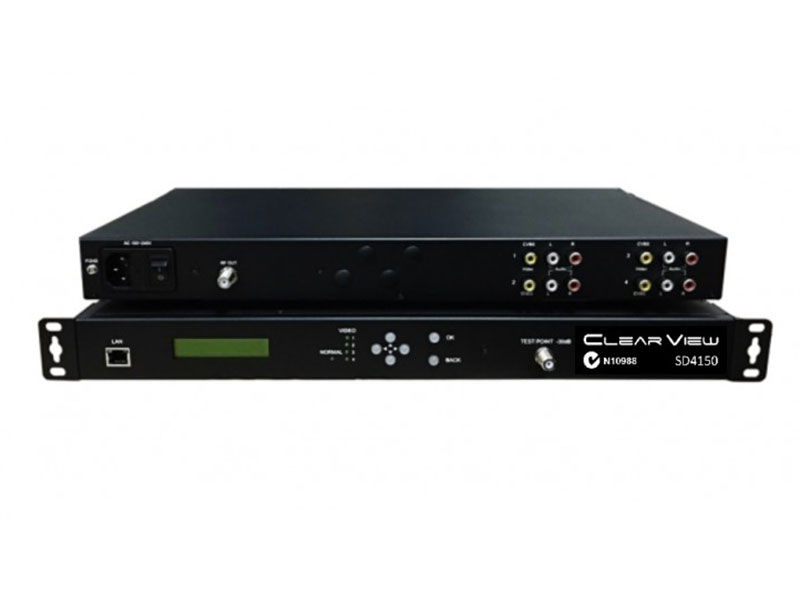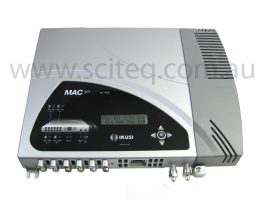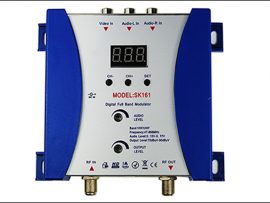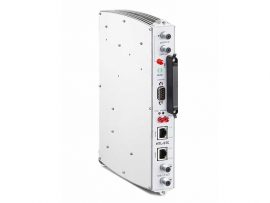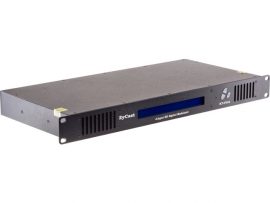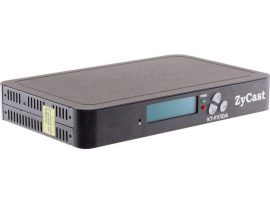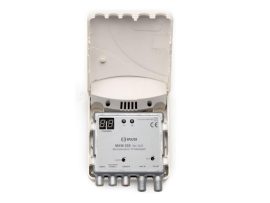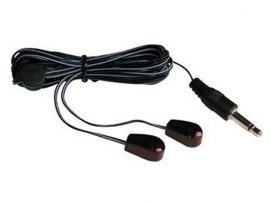Description
Clearview SD4150 Quad AV SD MPEG2 Modulator
Details
This Clearview SD4150 Modulator can take 4 x CVBS (AV/Composite Video & Stereo L&R Audio via RCA) and convert them to 1 x DVB-T MPEG2 Standard Definition RF Output
Features
- Adjustable Aspect Ratio
The SD4150 can be adjusted to match the aspect ratio of your media source, whether it’s wide screen or full screen. - Test Point -30dB
Test point on the front panel enables user to test the performance without removing the unit from the shelf. - Fan-less product
Natural convention cooling for reducing maintenance costs. - Ease of management:
On-site or remote management via front panel display and intuitive web interface.
Specifications
| Video Input |
Type | 4 x CVBS |
| Video encoding format | MPEG2 | |
| Audio encoding format | MPEG-1 audio layer ll (ISO/IEC 11172-3) | |
| Supported resolution | 576i/480i | |
| DVB-T mode | Bandwidth | 6/7/8 MHz |
| Mode | 2K/8K | |
| FEC | 1/2, 2/3, 3/4, 5/6, 7/8 | |
| Guard interval | 1/4, 1/8, 1/16, 1/32 | |
| Constellation | 16QAM/64QAM | |
| RF output | Type | 1 x RF out, 1 x Test Point -30dB |
| Frequency | 50~860MHz | |
| Output level | 75~105dBuV | |
| MER | DVB-T mode > 36dB | |
| Connector type | F, female | |
| Other setting | Basic | Service name, Service ID and LCN |
| Advanced | PID, PDS and TSID | |
| Local operation | LCD display and buttons | |
| Remote operation | 10/100M LAN network | |
| General | Power supply | 110~240VAC, 50/60Hz |
| Operating temperature | 0~55 degree C | |
| CE & Safety | Yes | |
| Dimensions | 44x440x280mm | |
| Weight | 3.5 kgs |
What’s in the box?
1 x Clearview SD4150 Modulator
1 x AC power lead
1 x User manual
For a Quad MPEG2 HDMI Modulators, please see the Clearview HD4112SE
What’s the difference between MPEG2 and MPEG4?
DVB-T (Digital Video Broadcasting – Terrestrial) is a standard for transmitting digital television signals over terrestrial (over-the-air) broadcast networks. MPEG-2 and MPEG-4 are video compression standards used in DVB-T to encode the video content.
- DVB-T MPEG-2: DVB-T MPEG-2 refers to the use of the MPEG-2 video compression standard within the DVB-T system. MPEG-2 is an older compression standard that was widely used for digital television broadcasting before the introduction of MPEG-4. It offers moderate compression efficiency, which means it requires more bandwidth to transmit video compared to MPEG-4 for the same quality. MPEG-2 provides good video quality, especially for standard definition (SD) content, and it is still compatible with many older television sets and receivers.
- DVB-T MPEG-4: DVB-T MPEG-4, on the other hand, uses the more advanced MPEG-4 video compression standard. MPEG-4 offers better compression efficiency, allowing broadcasters to transmit higher quality video using less bandwidth compared to MPEG-2. This is especially beneficial for high-definition (HD) and other bandwidth-intensive content. MPEG-4 can deliver superior video quality with the same amount of data or equivalent video quality with less data compared to MPEG-2. However, MPEG-4 requires more processing power for encoding and decoding, which means older television sets or receivers may not support MPEG-4 without a compatible decoder.
In summary, the main difference between DVB-T MPEG-2 and DVB-T MPEG-4 lies in the video compression standard used. MPEG-2 is an older standard with moderate compression efficiency but good compatibility with older devices, while MPEG-4 is a more advanced standard offering better compression efficiency for higher quality video but requiring more processing power and compatibility considerations.
How can I tell if my TV is MPEG2 or MPEG4?
Early digital TVs sold in Australia had MPEG2 DVB-T Tuners. Later models have progressed to MPEG4. Any MPEG4 TV will work with MPEG2 signals. However MPEG2 TVs will not work with MPEG4 signals including those from MPEG4 modulators.
It is often difficult to see from the TV’s specifications if the hardware is MPEG2 or MPEG4. The easiest way is to test the TV with a normal broadcast antenna signal. New HD Channels such as Channel 70 (7HD) or Channel 31 (SBS Viceland HD) are broadcast in MPEG4. If your TV produces a black picture or an error message such as FORMAT NOT SUPPORTED, then this TV is MPEG2 only.
To correct a MPEG2 only TV, a new DVBT Set Top Box can be used to tune the RF signal and convert it to a HDMI input on the TV.

